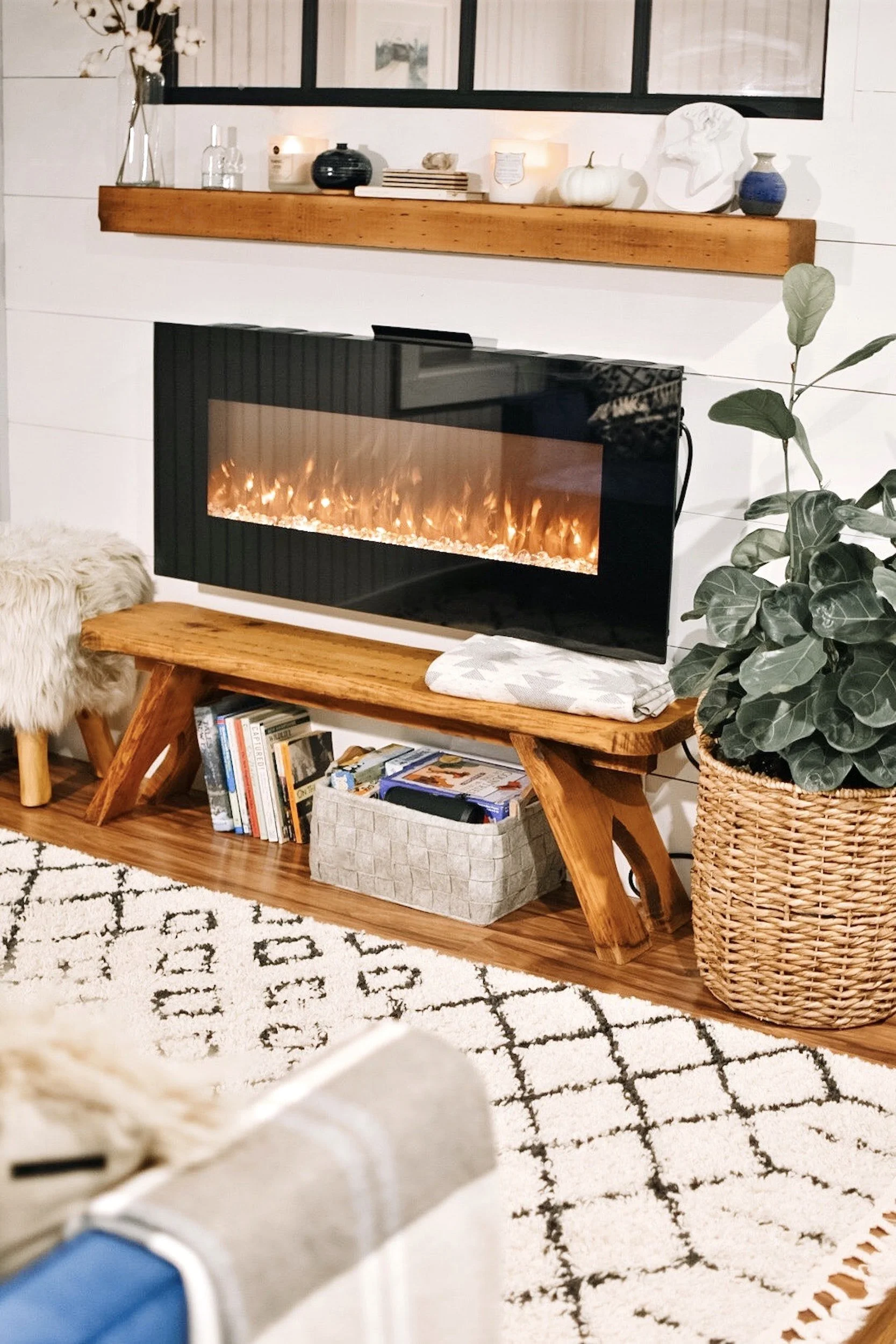Flames and logs.
As the nights draw in and it becomes colder, the addition of a blazing fire in the room you use most seems more attractive. Especially if you can redude your energy usage by only heating one room of the house for most of the evenings.
There are many options available for you even if you don’t have any chimney or ventilation system already. If you do have a chimney, then it is worth finding out if it is working by calling in a Chimney Sweep. Yes, they do still exist outside of Mary Poppins! If it is working, or needs minimal work, then this expands the choices you have.
Options for fires include Bio-ethanol, electric or natural gas. Woodburning and Coal are less eco-friendly options and are not allowed (or soon won’t be for some), but are still available in other areas.
In this section, I will list some of the pro’s and con’s of each of the above types of fire ranked from the messiest to the cleanest:
Coal - You have to have specific types of coal delivered, along with kindling and newspaper, refills of each, and cleanin out a fire are messy and the dust gets everywhere. But there is nothing quite like the roar and warmth of a coal fire. You will need a working chimney for this option.
Wood-burning - Again you need ready supplies of wood to be kept as well as starting material. Its less messy to maintain, but you still have to clean it out after use. Its less polluting than coal, but gives the same warmth and atmosphere as coal. Wood-burning stoves can keep a large room very warm. A flue up a chimney or through an external wall is needed for this option.
Gas - add a plumbed in natural gas insert into your fireplace or a new unit installed into your wall is a great option for a cleaner real fire. The flames are consistent and do look great and fiding natural look logs or coal accessories wil add to the overall look. It is clean (once installed) and, although you don’t get the noises or smell like coal or wood, the warmth radiates from it as well. At a click of a button (remote if you want) the fire springs into life and is switched off the same way. You do still need a flue and other ventilation bricks for this type of fire,
Bio-Ethanol - growing in popularity are Bio-ethanol fires. These burn a renewable source of energy created from fermenting sugarcane, grain or other maize type products. It burns with a clean flame with no pollutants. They are run on a tank, which needs to be re-filled occasionally, depending upon how long you use it for. These fires come in all shapes and sizes, can be inserted into walls, existing fire-places, into furniture and outside. They are very flexible and do have a real flame. As with gas fires, they don’t give off the crackle and smoke, but run clean and give out heat. There are so many types of fire, this is the option to use if you can’t install a chimney or flue.
Electric - the cleanest in set up, but the least ‘real’ in terms of flames and heat. They have improved greatly since they were introduced, and you can get some that have realistic coals or wood elements. However the ‘flames’ are pictures only and not real. They are great for just adding to a room and can just be plugged in without great building work. They do give out warmth and add a feature to a room. You don’t need a chimney or a flue for this type of fire. Some electric fires can add sound effects of crackling and spitting like real-fires do do add atmosphere that way over the Gas and Bio-Ethanol fires.
Above is a quick run through the pro’s and con’s of each type of indoor fire. You will need to think about the best option for you and how it will fit in with your design aesthetic. All fires can be found in traditional and contemporary styles. They can fit into existing hearths, inset into the wall or just added as a freestanding element to your room.
Prices can be anything from a few hundred to several thousand pounds, they may need specialist fitters (especially around Gas installation) or just be plug and go. When choosing a fire think about what space you have to store any fuel, if you have existing flues or chimneys, or need to add them. If you don’t have external walls where you want to put the fire, perhaps look at the flue-less bio-ethanol or electric options. Also consider children and pets and how likely they are to go near the fire or (in pets case) try to get up the chimney. Consider also if you want to mount your TV above the fire and how that will work height and heat wise.
Fires can add a great focal point to the room and create warmth when needed specifically in that room. They can be easy to use or create new rituals for chopping wood or delivery of coal. But do check on the local requirements around wood and coal fires before you pick these,



